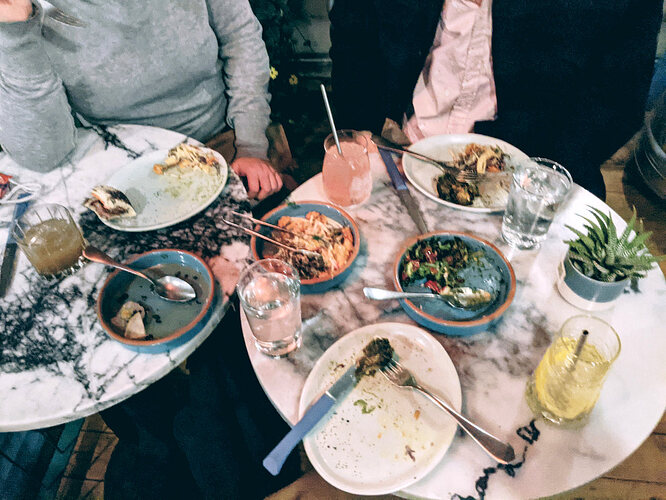I recently went out to Liholiho Yacht Club in San Francisco with a couple of friends and I think they have found a really nice balance between the new pandemic normal of QR self-service ordering, and actual server interaction and “table service”. From the beginning of the health-related changes we have been seeing at food establishments, I have actually been cautiously optimistic that in fact we will all come out better for it in the end, at least as far as the food industry is concerned. And I’ve seen glimpses of that eating out at a few places prior. But this was to-date the best balance I’ve seen, so I thought I’d talk a bit about it, what I liked about the experience, would could maybe use some work, and what other places could perhaps learn from.
Starting here with just an outline of some thoughts and I’ll try to flesh this out over time soon.
- QR ordering is faster and more efficient for everyone
- Guests can order more at any time, no need to wait for or flag down a server
- Digital menus allow for images of food, if desired, without having to print expensive, wasteful new color menus every time
- Digital ordering allows easy and more accurate communication of special requests (in online order notes)
- Food options or available modifications (e.g. gluten free, with fries or salad, etc.) can be more easily represented and selected by the guest
- It provides a clear record of what was chosen and puts the responsibility on the guest or the system, not the server, so a server should never again be blamed for messing up someone’s order
- Easier to split checks and less annoying labor for servers
- Digital menu display can be adjusted by the guest, so in dim environments, people with sight issues can more easily read.
- Those who are blind can even use assistive devices with any good digital menu!
- Online menus eliminate waste and cost of printing new menus, often daily for the more seasonal/market-driven places (services costs for e.g. Toast do somewhat replace this, but it is not necessarily 1:1)
So in short, all this leaves time for servers to interact more with customers around areas where they can provide unique value over a static menu. Describing dishes, talking about ingredient sourcing, making recommendations, dealing with truly unique/special requests, or just helping provide ambiance. And there is also the very nice and important side benefit of actually making dining out potentially more accessible to those with disabilities, especially for sight and hearing.
All that said, it’s important to acknowledge that digital menus are not universally accessible. They require a device, which presents obvious income requirements and potential class issues. These days almost anyone seems to be able to afford a basic cell phone, even one that should be able to display a simple web page. But older devices do often have problems with the actual ordering, or even sometimes the display of menus, etc. This can all hopefully be worked on over time, and perhaps sanitized loaner devices can even be an option in some cases, where necessary.
I should also mention that the very tech to make this happen, the subscription service for the ordering platform, and any digital devices to support it, are themselves barriers to access for low budget, low margin restaurants and other food service locations. There are, in other words, arguably some “class” barriers here. There are also simple technology savvy issues, where people who are not as comfortable with newer tech can be excluded from these benefits, or perhaps looked down on if they don’t take advantage of them. I’m not sure of the best solutions to those challenges, but I do recognize it’s important to be aware of and try to solve them.
I do think the servers also need to be given a better awareness of what customers are doing/have done. I frequently had staff come to our table and ask if wanted to, for example, order more drinks, shortly after we had in fact ordered more. My guess is they have to check a central console/computer to check on what people have ordered, so I just think perhaps they should have personal devices that give them more info on what customers are up to in real time, something that they carry on their person. This is probably already in development, if not available yet, because it seems like an obvious next step.
An important point to acknowledge is that this is purely from the customer side of things. The experience of the staff themselves with these new systems and tools is at least as important, and it’s not something I have any insight into. While I can imagine some discomforts and growing pains, my hope is that they also are experiencing some of the benefits I outlined above, with less tedious and repetitive interactions, and more time and space for unique and positive customer experiences. But I really don’t know and I’d love to hear from anyone reading this who is in food service!
Oh and by the way, it was a really great meal! Liholiho is very hyped in this area, and I’ve found a few past visits pre-pandemic to honestly be somewhat lackluster. But this time it was really great, overall. I still want their cocktail program to improve a bit more, but it’s good enough now, and certainly trying interesting things. The food, though, is almost universally excellent!
